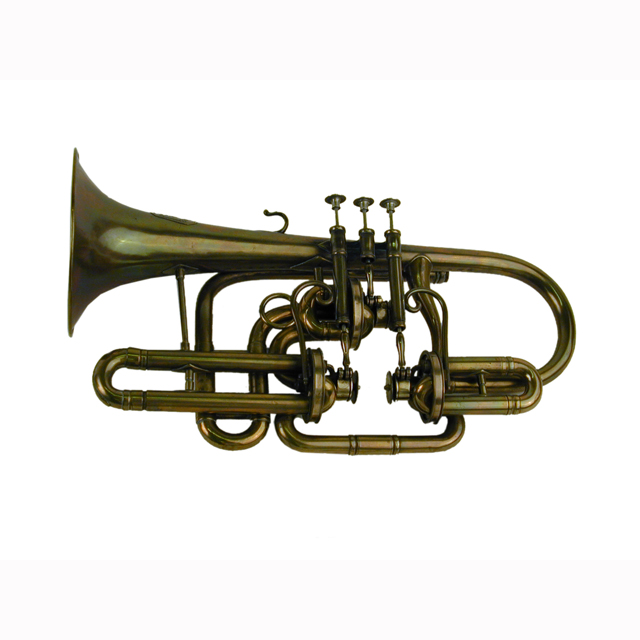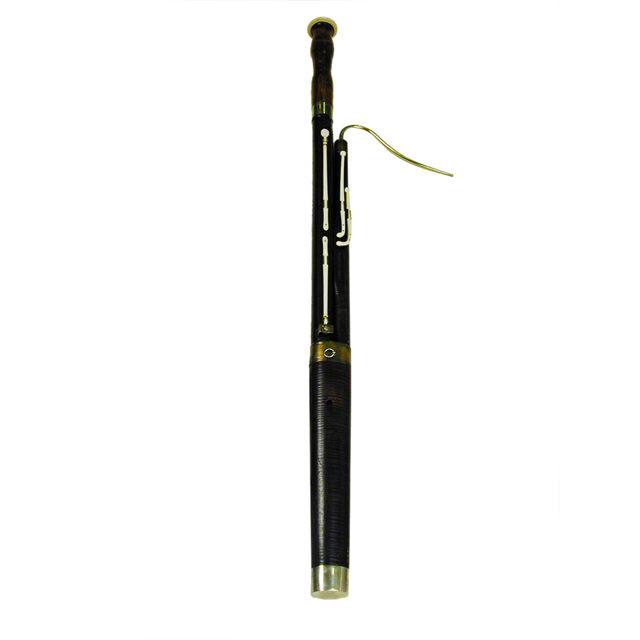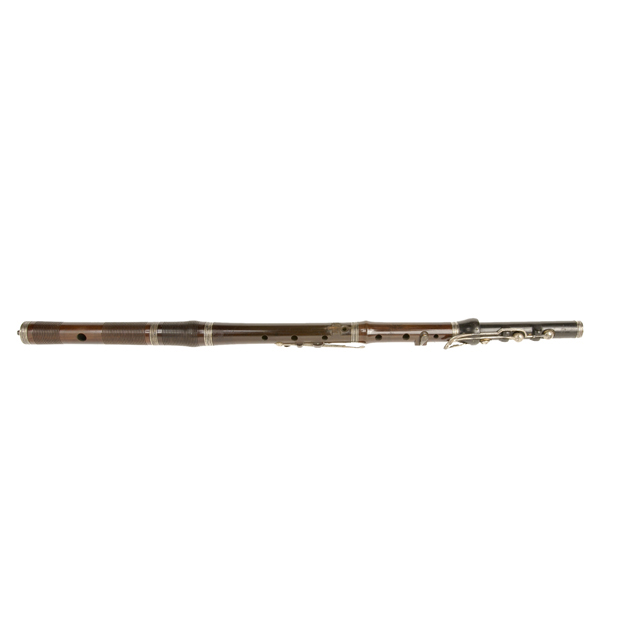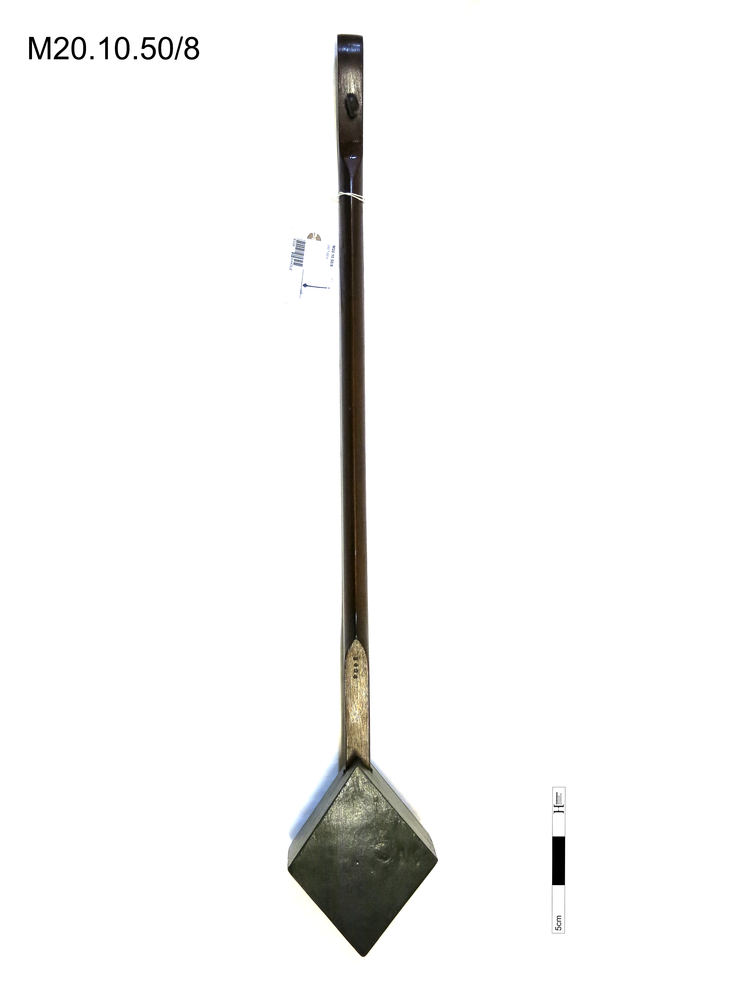A probable prototype, five-octave double manual harpsichord made by Arnold Dolmetsch in Haslemere in 1928. The instrument is veneered in walnut with handmade brass hinges, has a detachable music stand and is bolted to a trestle stand that can be stored flat.
This instrument was built in the same year (1928) that Arnold Dolmetsch patented his 'new action' for the harpsichord. Although this instrument possesses the older, more traditional harpsichord action, it has a vibrato stop which formed part of the new action's patent. Several features of this harpsichord suggest that it was a prototype of some kind, showing a clear change of mind during construction and a frugal attitude towards materials. The structural feature of perhaps greatest interest is the wrestplank, the robust wooden plank that holds the tuning pins and resists, at the player's end of the instrument, the tension of the strings. On the visible side, the top, of the wrestplank, we see the expected pattern of wrestpins, nuts and special effect stops. On the underside, or hidden surface, there is a different pattern marked out and drilled, though never used. This pattern was clearly rejected at some point by Dolmetsch before the wrestplank was finally installed, showing a reassessment of his options and a change of mind in the ordering of the ranks of strings. Rather than starting afresh with a new wrestplank, the thrifty woodworker simply turned the plank over, made the 'corrections' and installed it, leaving the former train of thought intact on the underside. Dolmetsch's frugality with materials contrasts starkly with his abundant inventiveness towards the harpsichord action. Most tellingly in aesthetic terms, Dolmetsch included in this harpsichord's action both a crescendo and a vibrato stop, the former, pedal operated. The crescendo pedal advances the plectra further under the strings during playing, increasing the volume. Gradually releasing the pressure on the pedal accomplishes the opposite effect. The vibrato consists of a series of leather-topped wooden dowels which, on the sustained depression of the keys on the upper manual, bear on the non-sounding length of the front 8-foot set of strings, varying the tension on the strings with the force of the touch, creating the wavering of pitch known as vibrato. On the clavichord, these effects can be accomplished without the need for any pedals or extrinsic mechanism, but they never formed part of the harpsichord's vernacular during the historical period. The lack of this capacity in the harpsichord, together with its inability to produce graduations in volume by variations in the force of touch, was perceived, particularly towards the end of its 300 year predominance, as an expressive deficit, partly accounting for the presence of these mechanisms in this instrument.






